The 10 Most Common Birds in Spain


Written and verified by the psychologist Sara González Juárez
If one of your hobbies is ornithology, in the Iberian Peninsula you can take it to its extreme, as it is the second most diverse place in Europe in terms of birds. Here we’ll bring you the most common birds in Spain so that you can take your guide wherever you go.
Whether you’re in the countryside or in the city, it will be very easy to find these birds. Each one of them is special, as you’ll see.
The 10 most common birds in Spain
The birds you are going to see below are easy to recognize and are a variety of sizes and colors. In addition, many of them tolerate the presence of humans, so you can practically do without binoculars to appreciate their main features.
1. Blackbird (Turdus merula)
The blackbird is, quite logically, black in color, although it’s brown in the case of females; it also has a bright orange beak and eye rims. Its songs can be heard mainly at dusk and dawn, and you usually see them in pairs. The species is naturally distributed in Europe, Asia, and North Africa.
Blackbirds are capable of imitating sounds, so it isn’t surprising that they sing the tones of other birds or even inanimate objects.

2. House sparrow (Passer Domesticus)
These passerines are one of the most common birds in Europe. Currently, the species is in vulnerable status due to the incessant population decline it is suffering. Its main threats are pollution, the reduction of green areas in cities, and the introduction of invasive species in their habitat (such as the Argentine Parakeet).
Males have a characteristic spot on the cheeks and breast that grows during the mating season. The sexual dimorphism is very evident.
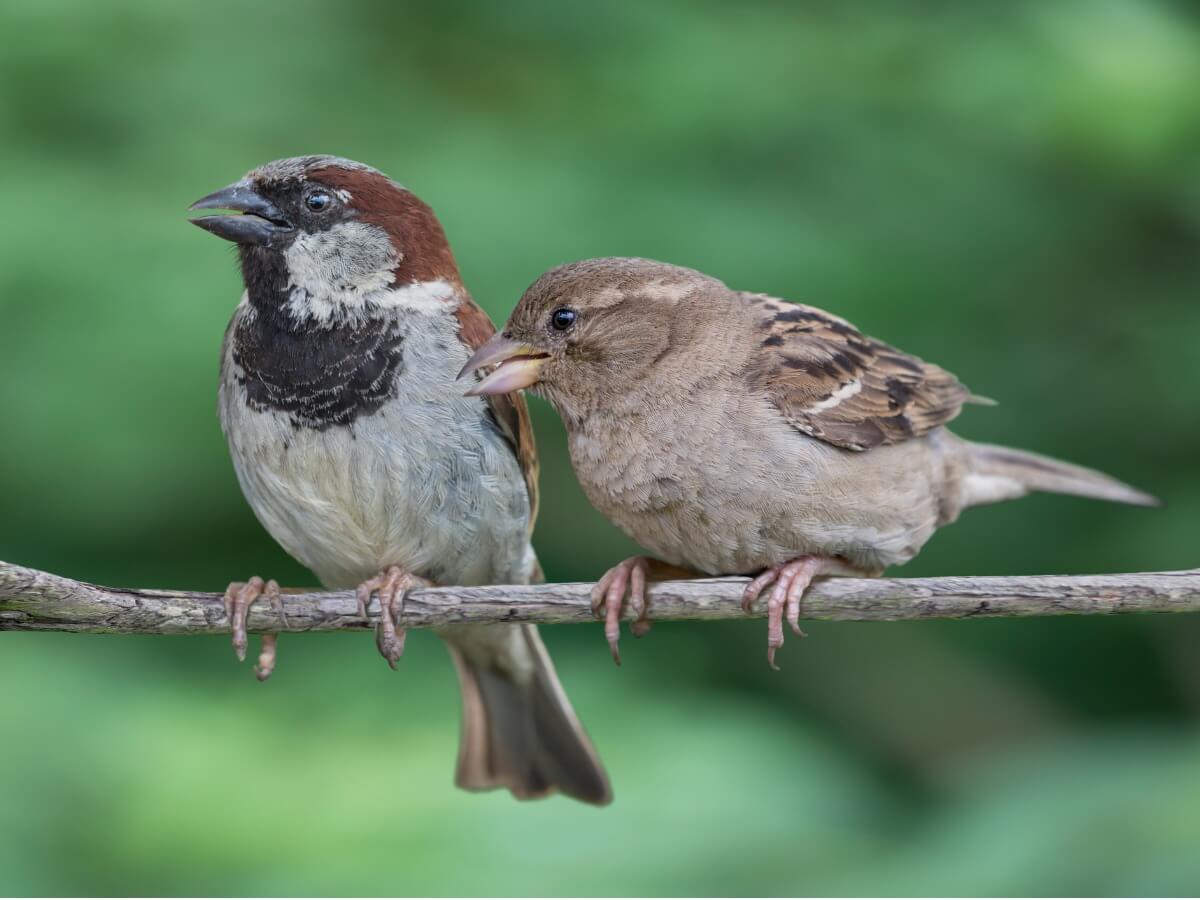
3. European goldfinch (Carduelis carduelis)
The goldfinch is one of the most common birds in Spain. Although these birds are often kept in captivity for their song, there are also plenty in the wild, and their presence in homes is increasingly condemned by law. The species is characterized by its red facial mask, yellowish tints on the breast and wings, and the black-white color of its head.

4. Spotless starling (Sturnus unicolor)
The spotless starling is easily confused with the blackbird from afar. However, the former has a duller bill and feathers with a somewhat metallic hue. Its song is more gurgling than that of the blackbird and it moves in flocks; they can put on an incredible show in the sky with their synchronized flight.
5. White wagtail (Motacilla alba)
The common name of this species comes from the fact that it’s usually found on the banks of bodies of water, such as rivers, lakes, or seas. It has a characteristic and a rather funny way of running and boasts a white, black, and gray plumage that culminates in a beautiful pattern on the wings. Another characteristic of the white wagtail is the tapping it makes with its tail every time it finishes running.
This species lives in many parts of Europe, Asia and North Africa. Some populations are resident and others migratory.
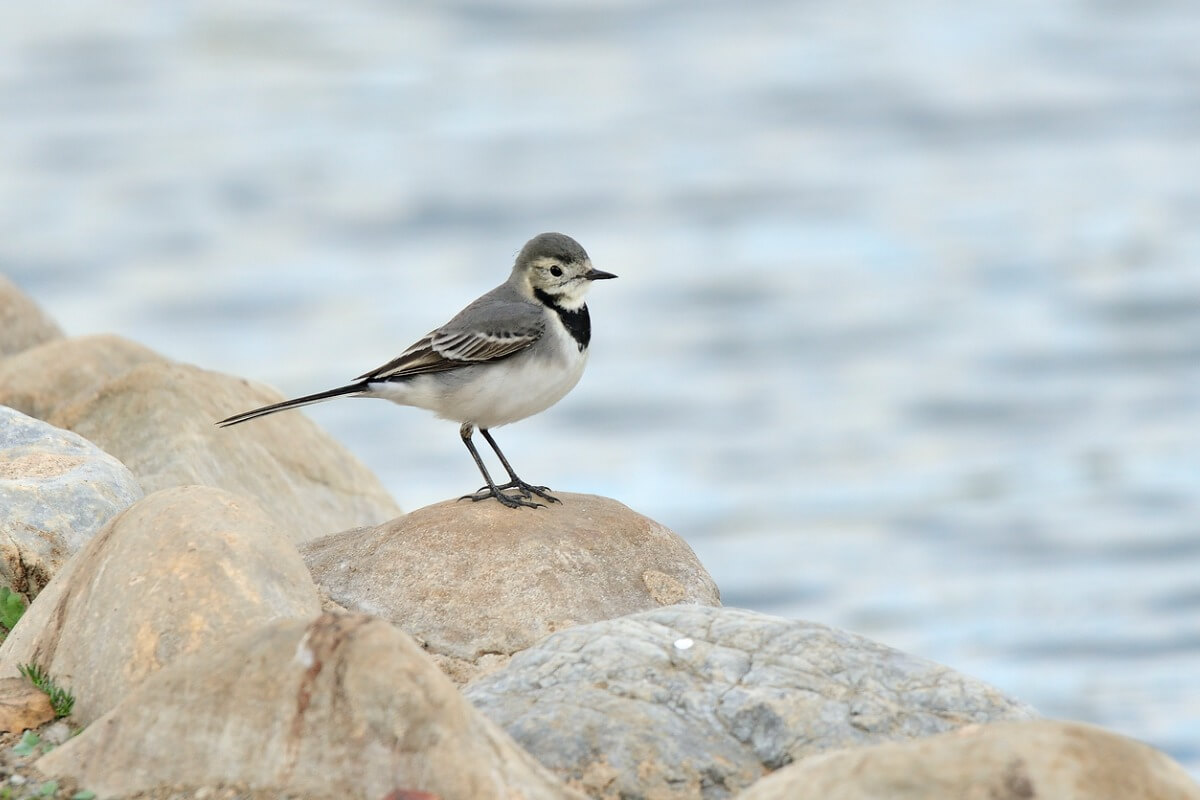
6. Eurasian hoopoe (Upupa epops)
The colors, beak, and crest of the Eurasian hoopoe are unmistakable. Its beak is particularly long and it specializes in drilling into the ground and trees to reach the insects it feeds on. Its crest is made up of erectile feathers and it’s a privilege to see it displayed.
7. Magpie (Pica pica)
The magpie is another of the most common birds in Spain and it’s very easy to find in the cities. Its black and white pattern is characteristic, and it’s easy to identify. It also has a very striking metallic sheen to its plumage.
Magpies are intelligent (they belong to the corvid family, known for their high cognitive abilities) and territorial birds. They can easily displace other bird species or even mammals such as cats from their territories.
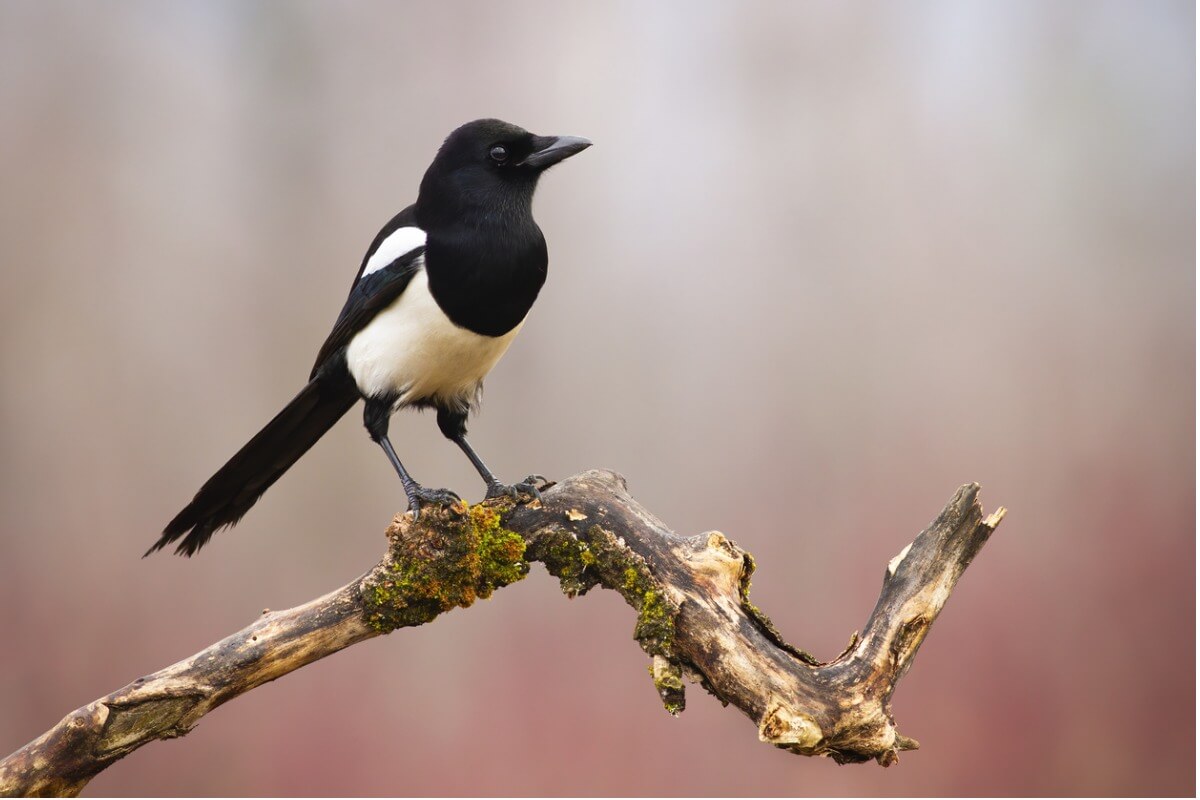
8. Robin (Erithacus rubecula)
The robin is a small bird easily recognized by its rounded body, greyish-brown plumage, and the orange splash that colors its face and breast. It’s a bold and curious bird, so it will take a while to fly away if you approach it slowly.
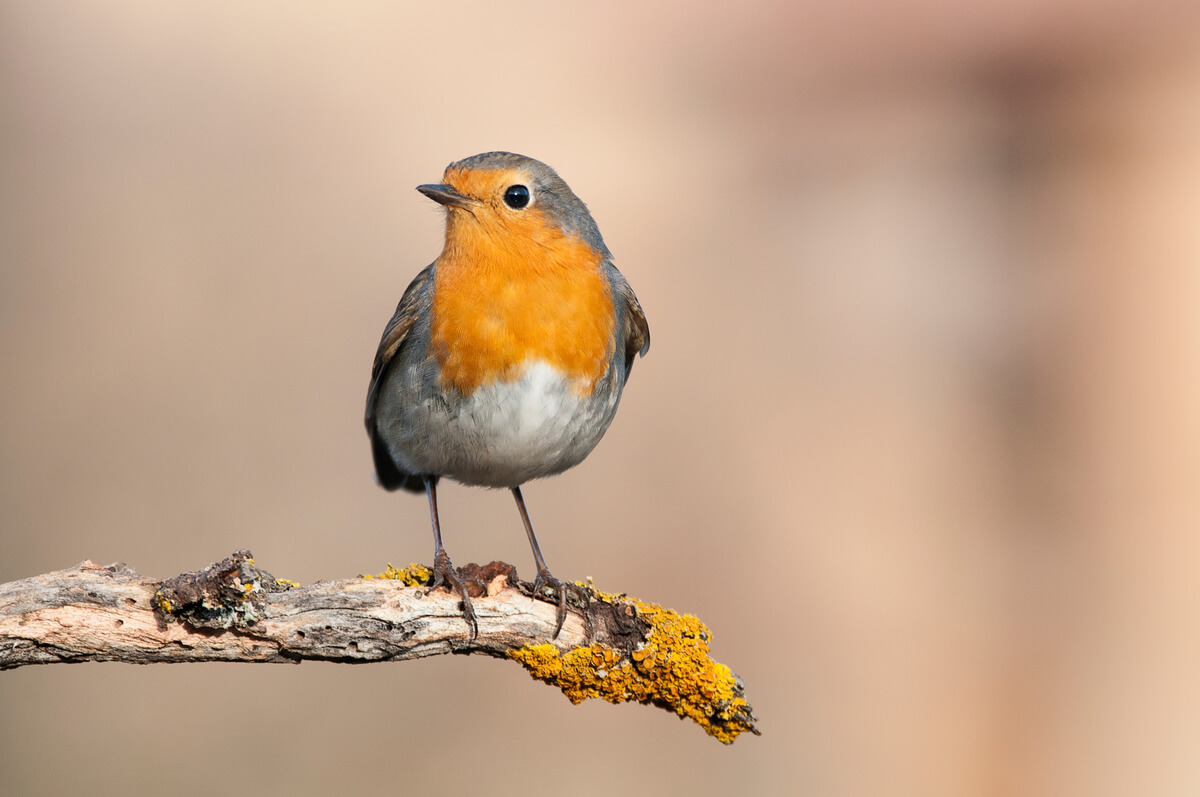
9. Rock dove (Columba livia)
The rock pigeon is the wild ancestor of the domestic pigeon, with which it is often hybridized as it’s basically the same species. Present in cities and towns, it’s closely linked to human settlements and depends to a large extent on the quality of the air and the hygiene of its dwellings to be free of diseases.
10. Black redstart (Phoenicurus ochruros)
While the males of this species are black with a deep red tail (a characteristic that gives it its name), the females are browner. These birds establish lasting pairs and usually nest in hollows of trees or buildings.
In Spain, this species is relatively common in the northern half of the country, and scarcer in the southern half, where it’s found in mountainous areas.
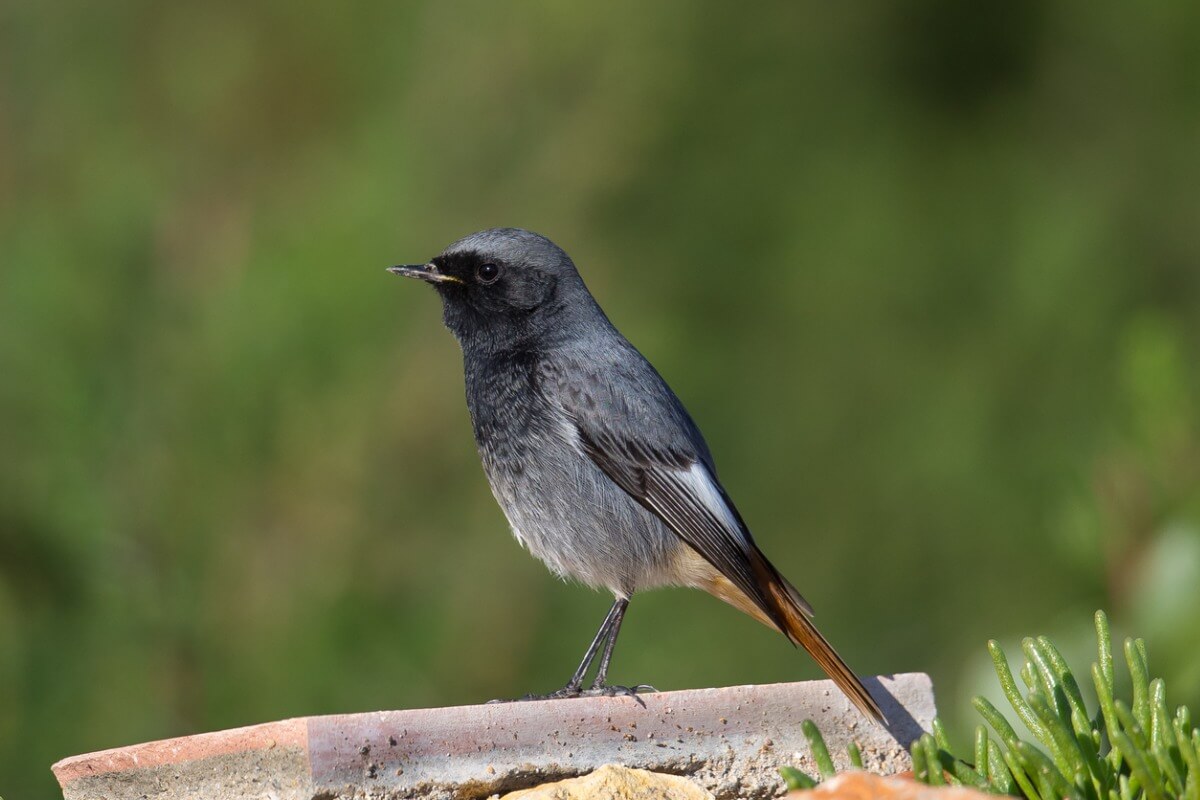
A world among feathers
If, in addition to observation, you’re interested in community action, then we suggest that you take a look at the eBird database, where you can contribute your sightings to bird censuses around the world. Initiatives of this kind are fundamental when it comes to justifying actions for conservation, as they help a lot in research and population monitoring.
There are also numerous citizen initiatives to fight for the protection of birds. If we want to continue to see them brighten up the skies, then learning to live with them and protect them is essential.
If one of your hobbies is ornithology, in the Iberian Peninsula you can take it to its extreme, as it is the second most diverse place in Europe in terms of birds. Here we’ll bring you the most common birds in Spain so that you can take your guide wherever you go.
Whether you’re in the countryside or in the city, it will be very easy to find these birds. Each one of them is special, as you’ll see.
The 10 most common birds in Spain
The birds you are going to see below are easy to recognize and are a variety of sizes and colors. In addition, many of them tolerate the presence of humans, so you can practically do without binoculars to appreciate their main features.
1. Blackbird (Turdus merula)
The blackbird is, quite logically, black in color, although it’s brown in the case of females; it also has a bright orange beak and eye rims. Its songs can be heard mainly at dusk and dawn, and you usually see them in pairs. The species is naturally distributed in Europe, Asia, and North Africa.
Blackbirds are capable of imitating sounds, so it isn’t surprising that they sing the tones of other birds or even inanimate objects.

2. House sparrow (Passer Domesticus)
These passerines are one of the most common birds in Europe. Currently, the species is in vulnerable status due to the incessant population decline it is suffering. Its main threats are pollution, the reduction of green areas in cities, and the introduction of invasive species in their habitat (such as the Argentine Parakeet).
Males have a characteristic spot on the cheeks and breast that grows during the mating season. The sexual dimorphism is very evident.

3. European goldfinch (Carduelis carduelis)
The goldfinch is one of the most common birds in Spain. Although these birds are often kept in captivity for their song, there are also plenty in the wild, and their presence in homes is increasingly condemned by law. The species is characterized by its red facial mask, yellowish tints on the breast and wings, and the black-white color of its head.

4. Spotless starling (Sturnus unicolor)
The spotless starling is easily confused with the blackbird from afar. However, the former has a duller bill and feathers with a somewhat metallic hue. Its song is more gurgling than that of the blackbird and it moves in flocks; they can put on an incredible show in the sky with their synchronized flight.
5. White wagtail (Motacilla alba)
The common name of this species comes from the fact that it’s usually found on the banks of bodies of water, such as rivers, lakes, or seas. It has a characteristic and a rather funny way of running and boasts a white, black, and gray plumage that culminates in a beautiful pattern on the wings. Another characteristic of the white wagtail is the tapping it makes with its tail every time it finishes running.
This species lives in many parts of Europe, Asia and North Africa. Some populations are resident and others migratory.

6. Eurasian hoopoe (Upupa epops)
The colors, beak, and crest of the Eurasian hoopoe are unmistakable. Its beak is particularly long and it specializes in drilling into the ground and trees to reach the insects it feeds on. Its crest is made up of erectile feathers and it’s a privilege to see it displayed.
7. Magpie (Pica pica)
The magpie is another of the most common birds in Spain and it’s very easy to find in the cities. Its black and white pattern is characteristic, and it’s easy to identify. It also has a very striking metallic sheen to its plumage.
Magpies are intelligent (they belong to the corvid family, known for their high cognitive abilities) and territorial birds. They can easily displace other bird species or even mammals such as cats from their territories.

8. Robin (Erithacus rubecula)
The robin is a small bird easily recognized by its rounded body, greyish-brown plumage, and the orange splash that colors its face and breast. It’s a bold and curious bird, so it will take a while to fly away if you approach it slowly.

9. Rock dove (Columba livia)
The rock pigeon is the wild ancestor of the domestic pigeon, with which it is often hybridized as it’s basically the same species. Present in cities and towns, it’s closely linked to human settlements and depends to a large extent on the quality of the air and the hygiene of its dwellings to be free of diseases.
10. Black redstart (Phoenicurus ochruros)
While the males of this species are black with a deep red tail (a characteristic that gives it its name), the females are browner. These birds establish lasting pairs and usually nest in hollows of trees or buildings.
In Spain, this species is relatively common in the northern half of the country, and scarcer in the southern half, where it’s found in mountainous areas.

A world among feathers
If, in addition to observation, you’re interested in community action, then we suggest that you take a look at the eBird database, where you can contribute your sightings to bird censuses around the world. Initiatives of this kind are fundamental when it comes to justifying actions for conservation, as they help a lot in research and population monitoring.
There are also numerous citizen initiatives to fight for the protection of birds. If we want to continue to see them brighten up the skies, then learning to live with them and protect them is essential.
All cited sources were thoroughly reviewed by our team to ensure their quality, reliability, currency, and validity. The bibliography of this article was considered reliable and of academic or scientific accuracy.
- eBird – Discover a new world of birding. . . (s. f.). EBird. Recuperado 4 de octubre de 2021, de https://ebird.org/ebird/home
- C. (2018, 26 abril). 9 millones de gorriones menos en los últimos 20 años. SEO/BirdLife. https://seo.org/2018/03/22/9-millones-de-gorriones-menos-en-los-ultimos-20-anos/
- C. (2021, 28 abril). El 37% de las especies de aves comunes en España se encuentran en situación desfavorable. SEO/BirdLife. https://seo.org/2021/04/27/el-37-de-las-especies-de-aves-comunes-en-espana-se-encuentran-en-situacion-desfavorable/
- SEO/BirdLife. (2019b, marzo 29). Paloma bravía. https://seo.org/ave/paloma-bravia/
This text is provided for informational purposes only and does not replace consultation with a professional. If in doubt, consult your specialist.








